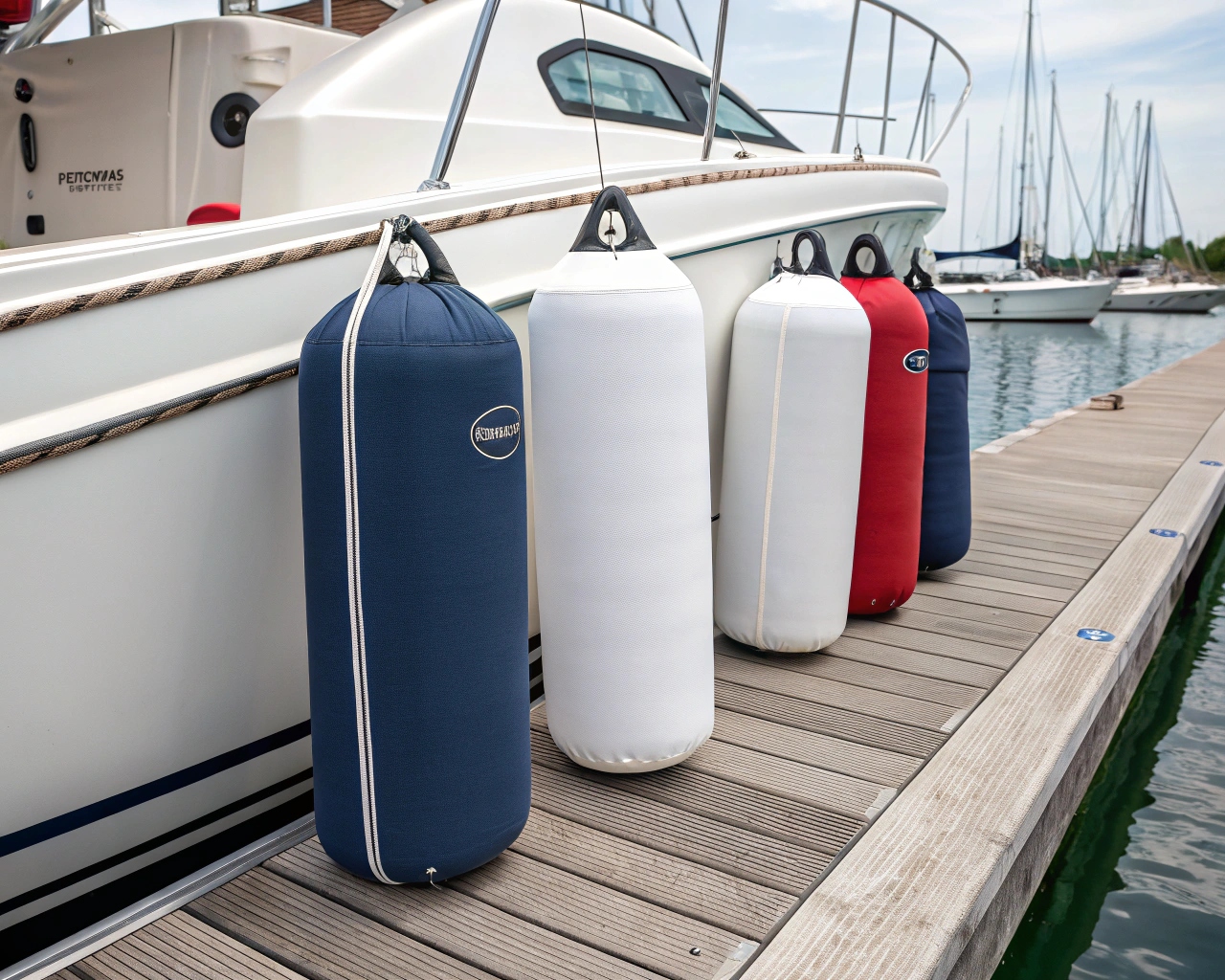Worried about your boat getting scratched or damaged while docking? It’s a valid concern, and the solution might be simpler than you think.
Boat fender covers protect your boat’s hull from scratches and scuffs. They also help to keep your fenders clean and prevent them from marking your boat’s gel coat. They’re a simple, yet effective, solution.
Choosing the right boat fenders and covers can be confusing. Let’s break it down together, so you can protect your investment, making this easier.
How to choose boat fenders?
Are you overwhelmed by the sheer number of boat fender options available? Size, shape, material – it can feel like a maze, don’t worry.
Choosing the right size fender depends on your boat’s length. A general rule is to use a 1-inch diameter fender for every 4-5 feet of boat length. Consider the docking conditions and potential impact energy.
The size of the fender isn’t just about a simple formula. Think of it as a way to manage energy. When your boat is still, the fender only needs to handle basic forces. But when things get moving – wind, waves, other boats – the fender has to absorb impacts instantly. The material and how much it compresses become more critical. I once saw a seasoned sailor use a combination of cylindrical and spherical fenders. It was insightful to view how different shapes handled the impact, spreading it out effectively.
Fender Size and Shape Considerations
| Factor | Description | Recommendation |
|---|---|---|
| Boat Length | The primary factor in determining fender size1. | Use a 1-inch diameter fender for every 4-5 feet of boat length. |
| Boat Weight | Heavier boats require larger fenders to absorb greater impact. | Consider increasing fender size beyond the length-based recommendation for heavier vessels. |
| Docking Conditions | Calm conditions require less protection than rough or exposed docks. | Use larger or more fenders in challenging conditions. |
| Fender Shape | Cylindrical fenders provide stable support, while spherical fenders offer quick rebound. Combining both can provide optimal protection by dispersing different types of impact. | Consider a mix of cylindrical and spherical fenders, especially in dynamic situations. |
What is the purpose of boat fender covers?
Do you worry about scratches and marks on your beautiful boat every time you dock? It’s stressful, seeing your investment get damaged, even a little.
Fender covers act as a protective barrier. They prevent direct contact between the fender and your boat’s hull, minimizing scratches. Covers also protect the fenders themselves from UV damage and grime.
The fender cover is about finding a balance. Most people think covers are just for preventing scratches. But over-relying on soft covers might actually make the fender less effective at buffering. I’ve seen neoprene covers soften in the heat. And this will cause the fender to deform. It’s crucial to think about the specific situation. Once, I used high-density nylon covers with low-rebound fenders on a rough dock. It gave the best protection.
Choosing the Right Fender Cover Material
| Material | Advantages | Disadvantages | Best Use Case |
|---|---|---|---|
| Neoprene | Soft, reduces friction, good UV protection. | Can soften at high temperatures, may reduce fender’s buffering efficiency. | General use, moderate conditions. |
| Nylon | High density, durable, good for rough surfaces. | Less soft than neoprene, may not provide as much cushioning. | Rough docks, areas with high abrasion. |
| Acrylic | UV-resistant, durable, retains color well. | Can be less flexible than other materials. | Long-term use, sunny climates. |
| Polyester | Affordable, water-resistant, good all-around protection. | May not be as durable as nylon or acrylic. | General use, budget-friendly option. |
How many fenders should a boat have?
Confused about how many fenders you actually need for your boat? It’s a common question, with more to it.
A good starting point is to have at least three fenders. This allows for basic protection on one side of the boat. However, the ideal number depends on your boat’s size and docking situation.
The "one fender for every 10 feet" rule isn’t always enough. Evenly spaced fenders might leave gaps where your boat is curved. The bow and stern, especially, need extra thought. I’ve seen boats use adjustable fender chains there. This creates layered protection. Some fishing boats even connect fenders to sensors. This lets them adjust the height automatically. It shows how protection can adapt.
Determining the Right Number of Fenders
| Factor | Description | Recommendation |
|---|---|---|
| Boat Length | Longer boats require more fenders to provide adequate coverage. | Add one fender for every 10 feet of boat length, in addition to the minimum of three. |
| Docking Type | Docking alongside a pier requires fenders on one side, while mooring between pilings needs them on both. | Adjust the number based on how you typically dock. |
| Docking Frequency | Frequent docking, especially in tight spaces, warrants more fenders. | Consider adding extra fenders for added peace of mind. |
| Rafting | When rafting with other boats, fenders are needed on both sides of each boat. | Ensure you have enough fenders to protect all boats involved. |
When should fender covers be used?
Are you unsure about when to actually use those fender covers you invested in? We all want to protect.
Think of fender covers as constant guardians. They’re not just for specific situations. They protect your boat all the time when it’s docked. This consistent use is key. It prevents those small, annoying damages that add up over time. I always make sure my fender covers2 are on. I see it as a simple habit, a little bit of effort that saves a lot of trouble in the long run. Protecting the boat’s finish.
Benefits of Using Fender Covers
| Benefit | Description | Impact |
|---|---|---|
| Hull Protection3 | Prevents scratches, scuffs, and marks on the boat’s hull caused by fender contact. | Maintains the boat’s appearance and resale value. |
| Fender Longevity4 | Shields fenders from UV rays, dirt, and grime, extending their lifespan. | Reduces the frequency of fender replacements, saving money. |
| Reduced Cleaning | Keeps fenders clean and prevents them from transferring dirt and marks to the boat’s hull. | Less time spent cleaning the boat and fenders. |
| Aesthetic Appeal | Fender covers can be customized with colors, logos, or boat names, adding a touch of personalization. | Enhances the overall look of the boat. |
Conclusion
Choosing the right boat fenders and covers is about understanding your boat’s needs, it’s very important. By considering these key factors, you’re protecting your investment and maintaining.
-
Understanding fender size is crucial for effective boat protection. Explore this link for detailed insights. ↩
-
Explore the benefits of fender covers to understand how they protect your boat and enhance its longevity. ↩
-
Learn about hull protection to see how it maintains your boat’s appearance and value over time. ↩
-
Discover the factors that extend fender longevity and save you money on replacements in the long run. ↩







